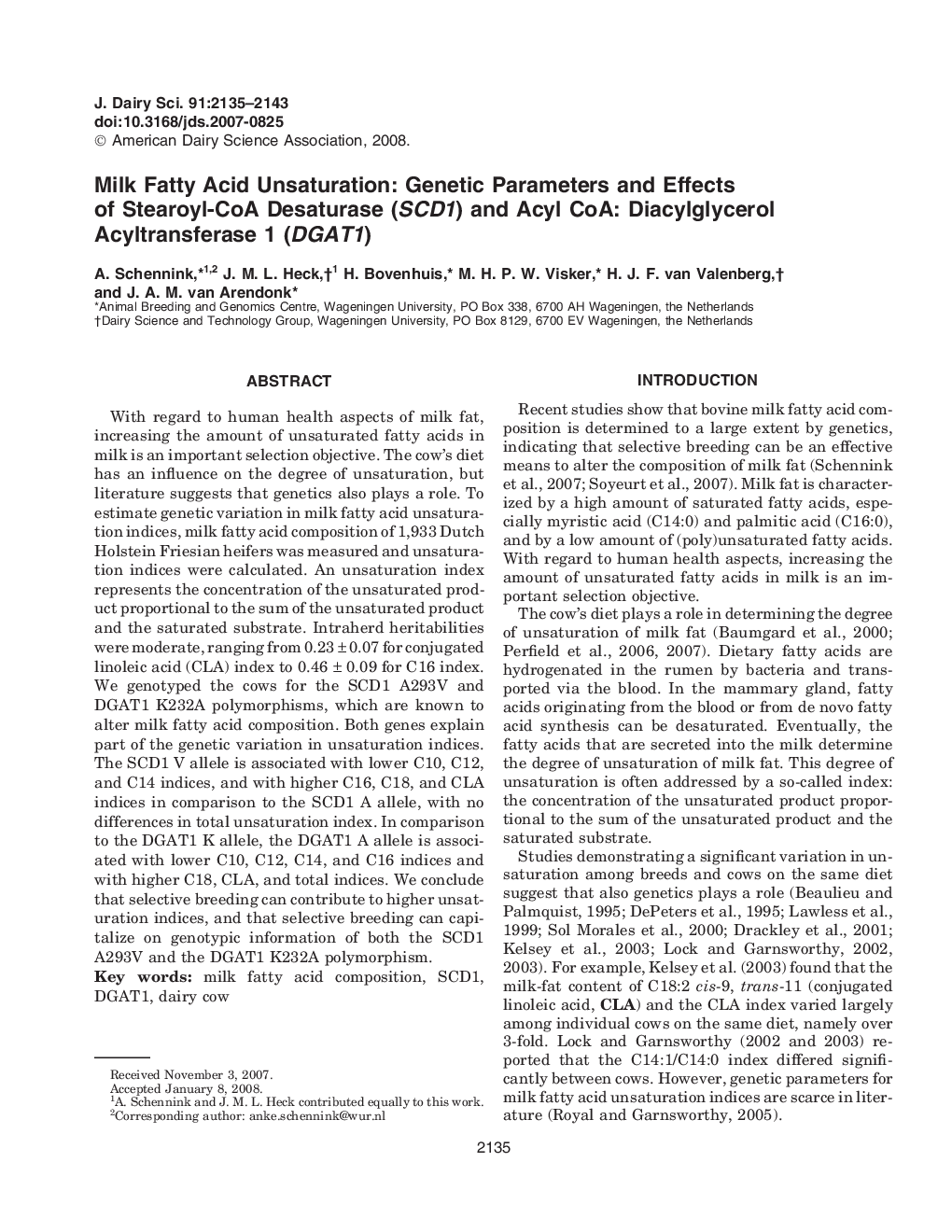| Article ID | Journal | Published Year | Pages | File Type |
|---|---|---|---|---|
| 2439249 | Journal of Dairy Science | 2008 | 9 Pages |
With regard to human health aspects of milk fat, increasing the amount of unsaturated fatty acids in milk is an important selection objective. The cow's diet has an influence on the degree of unsaturation, but literature suggests that genetics also plays a role. To estimate genetic variation in milk fatty acid unsaturation indices, milk fatty acid composition of 1,933 Dutch Holstein Friesian heifers was measured and unsaturation indices were calculated. An unsaturation index represents the concentration of the unsaturated product proportional to the sum of the unsaturated product and the saturated substrate. Intraherd heritabilities were moderate, ranging from 0.23 ± 0.07 for conjugated linoleic acid (CLA) index to 0.46 ± 0.09 for C16 index. We genotyped the cows for the SCD1 A293V and DGAT1 K232A polymorphisms, which are known to alter milk fatty acid composition. Both genes explain part of the genetic variation in unsaturation indices. The SCD1 V allele is associated with lower C10, C12, and C14 indices, and with higher C16, C18, and CLA indices in comparison to the SCD1 A allele, with no differences in total unsaturation index. In comparison to the DGAT1 K allele, the DGAT1 A allele is associated with lower C10, C12, C14, and C16 indices and with higher C18, CLA, and total indices. We conclude that selective breeding can contribute to higher unsaturation indices, and that selective breeding can capitalize on genotypic information of both the SCD1 A293V and the DGAT1 K232A polymorphism.
